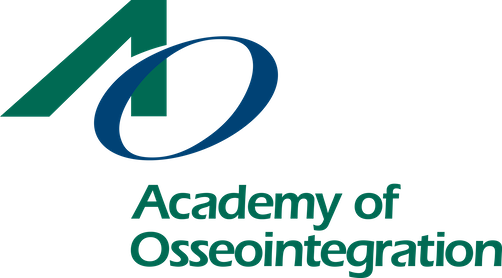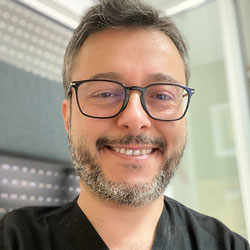-
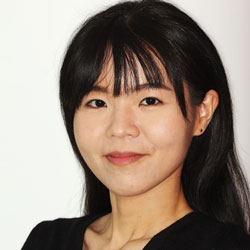 Chia-Yu (Jennifer) Chen, DMD, DMSc With the advent of digital dentistry, clinicians find themselves inundated with new materials, hardware and software in daily practice. A thorough comprehension of the technologies will help us integrate digital solutions to promote communication, as well as accelerating treatment processes and optimizing treatment outcomes. This presentation will allow dentists to become familiar with the digital workflow, with an emphasis on the implementation of additive manufacturing, namely 3D printing technology in practice. The various 3D printing technologies (FDM, SLA and DLP) and their pros and cons will be discussed. Clinical scenario will be presented to demonstrate their respective indications. Recorded - June 9, 2021
Chia-Yu (Jennifer) Chen, DMD, DMSc With the advent of digital dentistry, clinicians find themselves inundated with new materials, hardware and software in daily practice. A thorough comprehension of the technologies will help us integrate digital solutions to promote communication, as well as accelerating treatment processes and optimizing treatment outcomes. This presentation will allow dentists to become familiar with the digital workflow, with an emphasis on the implementation of additive manufacturing, namely 3D printing technology in practice. The various 3D printing technologies (FDM, SLA and DLP) and their pros and cons will be discussed. Clinical scenario will be presented to demonstrate their respective indications. Recorded - June 9, 2021 -
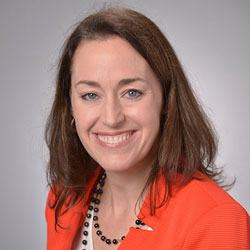 Lourdes Ann Christopher, DDS, MS Soft tissue grafting is a viable treatment option for root coverage and enhancement of gingival biotype as well as the prevention of future gingival recession around teeth. Soft tissue grafting techniques around teeth have evolved over the years resulting in better and more predictable clinical outcomes. Research has found that like teeth, dental implants have better long-term prognosis when they have improved soft tissue quality and thickness. This presentation will give a background on the rationale for soft tissue grafting around teeth and dental implants. Various advanced surgical techniques will be presented with an emphasis on timing to improve outcomes both in terms of patient morbidity and long-term stability. There will be discussion of the use of L-PRF, homeopathic supplements, lasers and biologics to enhance wound healing as well as post grafting frenectomy and vestibular extensions to stabilize the gingival margin post hard and soft tissue grafting. Recorded - February 16, 2021
Lourdes Ann Christopher, DDS, MS Soft tissue grafting is a viable treatment option for root coverage and enhancement of gingival biotype as well as the prevention of future gingival recession around teeth. Soft tissue grafting techniques around teeth have evolved over the years resulting in better and more predictable clinical outcomes. Research has found that like teeth, dental implants have better long-term prognosis when they have improved soft tissue quality and thickness. This presentation will give a background on the rationale for soft tissue grafting around teeth and dental implants. Various advanced surgical techniques will be presented with an emphasis on timing to improve outcomes both in terms of patient morbidity and long-term stability. There will be discussion of the use of L-PRF, homeopathic supplements, lasers and biologics to enhance wound healing as well as post grafting frenectomy and vestibular extensions to stabilize the gingival margin post hard and soft tissue grafting. Recorded - February 16, 2021 -
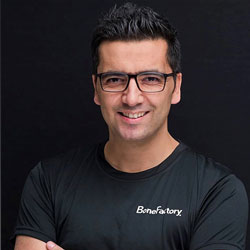 Şerif Küçük, MSc This presentation will review current concepts in implantology-augmentative techniques including:
Şerif Küçük, MSc This presentation will review current concepts in implantology-augmentative techniques including:-
- The Biological Concepts of Bone Augmentation and the Split Bone Block Technique by Professor Fouad Khoury;
-
- utilizing bone chips in the retromolar for safe bone harvesting
-
- discussion of the external oblique line-up and advanced bone augmentation in complex cases.
-
-
 Preetinder Singh, DDS, MS Bone regeneration is often needed prior to dental implant treatment due to the lack of adequate quantity and quality after infectious diseases. The greatest regenerative power can be obtained with autologous tissue, primarily the bone alive, taken from the same site or adjacent sites, up to the use centrifugation of blood with the selection of the parts with the greatest potential regenerative. In fact, various techniques and technologies were chronologically successive to cope with an ever better preparation of these concentrates of blood. Our aim is to know these advances and discuss the ways in which platelet concentrates may provide such unexpected beneficial therapeutic effects. Most of the growth factors derived from autologous blood is released upon platelet activation, and their clinical use has been popularized with Platelet-rich plasma (PRP), Platelet rich fibrin (PRF) & its advancements namely A-PRF & i-PRF, Concentrated Growth Factors (CGF), Sticky Bone Concept etc. It is time to use this ‘blood’ in different ways to achieve regenerative potentials in the field of implant dentistry. Recorded - January 20, 2021
Preetinder Singh, DDS, MS Bone regeneration is often needed prior to dental implant treatment due to the lack of adequate quantity and quality after infectious diseases. The greatest regenerative power can be obtained with autologous tissue, primarily the bone alive, taken from the same site or adjacent sites, up to the use centrifugation of blood with the selection of the parts with the greatest potential regenerative. In fact, various techniques and technologies were chronologically successive to cope with an ever better preparation of these concentrates of blood. Our aim is to know these advances and discuss the ways in which platelet concentrates may provide such unexpected beneficial therapeutic effects. Most of the growth factors derived from autologous blood is released upon platelet activation, and their clinical use has been popularized with Platelet-rich plasma (PRP), Platelet rich fibrin (PRF) & its advancements namely A-PRF & i-PRF, Concentrated Growth Factors (CGF), Sticky Bone Concept etc. It is time to use this ‘blood’ in different ways to achieve regenerative potentials in the field of implant dentistry. Recorded - January 20, 2021 -
 Luca Fiorillo, DDS, PhD, MSc Nowadays, dental implantology represents the gold standard in oral rehabilitation, simple or complex. The high predictability over time, and the related techniques to allow the possible rehabilitations are increasingly simple and feasible for the clinician. All this is guaranteed thanks to the presence of new biomaterials, starting from the implant surfaces and their primary or secondary geometries, to arrive at all the biomaterials related to the regeneration and maintenance of peri-implant tissues. The new challenge for the clinician concerns the possibility of keeping these tissues healthy and limiting implant complications, including peri-implantitis. Recorded - August 10, 2021
Luca Fiorillo, DDS, PhD, MSc Nowadays, dental implantology represents the gold standard in oral rehabilitation, simple or complex. The high predictability over time, and the related techniques to allow the possible rehabilitations are increasingly simple and feasible for the clinician. All this is guaranteed thanks to the presence of new biomaterials, starting from the implant surfaces and their primary or secondary geometries, to arrive at all the biomaterials related to the regeneration and maintenance of peri-implant tissues. The new challenge for the clinician concerns the possibility of keeping these tissues healthy and limiting implant complications, including peri-implantitis. Recorded - August 10, 2021 -
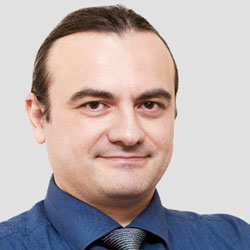 Kaan Orhan, DDS, MSc, MHM, PhD Dental implants have become part of routine treatment plans in many dental offices because of their popularity and acceptance by patients. Appropriate pre-placement planning, in which imaging plays a pivotal role, helps to ensure a satisfactory outcome. The development of precise pre-surgical imaging techniques and surgical templates allows the dentist to place these implants with relative ease and predictability. This presentation gives an overview of current practices in implant imaging for the practicing, with emphasis on selection criteria for imaging. Contemporary imaging techniques such as USG, MRI for dental implant planning, surgical phase, and also follow-up treatment will be discussed. Recorded - June 1, 2021
Kaan Orhan, DDS, MSc, MHM, PhD Dental implants have become part of routine treatment plans in many dental offices because of their popularity and acceptance by patients. Appropriate pre-placement planning, in which imaging plays a pivotal role, helps to ensure a satisfactory outcome. The development of precise pre-surgical imaging techniques and surgical templates allows the dentist to place these implants with relative ease and predictability. This presentation gives an overview of current practices in implant imaging for the practicing, with emphasis on selection criteria for imaging. Contemporary imaging techniques such as USG, MRI for dental implant planning, surgical phase, and also follow-up treatment will be discussed. Recorded - June 1, 2021 -
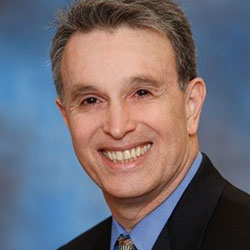 Robert Lemke, DDS, MD This is an update after one-year of being in the trenches of COVID-19. What do we know now. Why we will need masks for another year and which ones to avoid. I will review immunology as it applies to COVID-19. Vaccines from history, phase studies, mechanisms, herd protection and mutations will all be reviewed. Finally an intro to being a vaccine injection center will be introduced. Recorded - March 4, 2021
Robert Lemke, DDS, MD This is an update after one-year of being in the trenches of COVID-19. What do we know now. Why we will need masks for another year and which ones to avoid. I will review immunology as it applies to COVID-19. Vaccines from history, phase studies, mechanisms, herd protection and mutations will all be reviewed. Finally an intro to being a vaccine injection center will be introduced. Recorded - March 4, 2021 -
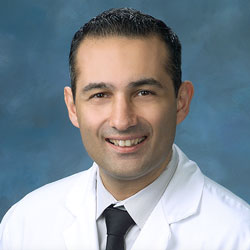 T. Cem Sayin, DDS, PhD Clinicians are confronted with difficult decisions regarding whether a tooth with pulpal and/or periapical disease should be saved through endodontic treatment or be extracted and replaced with an implant. This lecture will review the endodontic and implant literature as well as the related factors that need to be considered by the clinician affecting decision making for their patients. Recorded - February 03, 2021
T. Cem Sayin, DDS, PhD Clinicians are confronted with difficult decisions regarding whether a tooth with pulpal and/or periapical disease should be saved through endodontic treatment or be extracted and replaced with an implant. This lecture will review the endodontic and implant literature as well as the related factors that need to be considered by the clinician affecting decision making for their patients. Recorded - February 03, 2021 -
 Tara Aghaloo, DDS, MD, PhD Dental implants are a known and predictable treatment option for missing teeth, where most patients today desire this therapy. Although implant survival is extremely high, these favorable outcomes depend greatly on proper case selection, minimizing medical risk factors, careful surgical and prosthetic execution, and prevention and management of complications. In clinical practice, patient demands are becoming more difficult to meet, where they often seek immediate implants with immediate function. This leaves the practicing clinician with a dilemma of meeting patient expectations, but often without scientific evidence for our treatment protocols. This presentation will update the practicing dentist on achieving the most ideal and successful implant outcomes, improving case presentations, obtaining increased case selection, and avoiding and managing complications. Recorded - June 5, 2021
Tara Aghaloo, DDS, MD, PhD Dental implants are a known and predictable treatment option for missing teeth, where most patients today desire this therapy. Although implant survival is extremely high, these favorable outcomes depend greatly on proper case selection, minimizing medical risk factors, careful surgical and prosthetic execution, and prevention and management of complications. In clinical practice, patient demands are becoming more difficult to meet, where they often seek immediate implants with immediate function. This leaves the practicing clinician with a dilemma of meeting patient expectations, but often without scientific evidence for our treatment protocols. This presentation will update the practicing dentist on achieving the most ideal and successful implant outcomes, improving case presentations, obtaining increased case selection, and avoiding and managing complications. Recorded - June 5, 2021 -
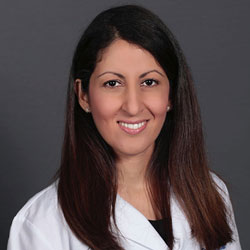 Ghadeer Thalji, DDS, PhD Success of dental implants requires the clinicians to understand the many factors that must come together to achieve long term outcomes. The lecture will explore the current scientific evidence on decisions related to the number of dental implants in various clinical scenarios of the partially and fully edentulous patients. Recorded - September 21, 2021
Ghadeer Thalji, DDS, PhD Success of dental implants requires the clinicians to understand the many factors that must come together to achieve long term outcomes. The lecture will explore the current scientific evidence on decisions related to the number of dental implants in various clinical scenarios of the partially and fully edentulous patients. Recorded - September 21, 2021 -
 Shih-Cheng Wen, DDS, MS Dental implant surgery has become a modern science and adjusting the occlusion of the implant restoration is one of the important factors to avoid the complications of dental implants. This presentation will share some literature on the subject of dental implant occlusion. Recorded - October 14, 2021
Shih-Cheng Wen, DDS, MS Dental implant surgery has become a modern science and adjusting the occlusion of the implant restoration is one of the important factors to avoid the complications of dental implants. This presentation will share some literature on the subject of dental implant occlusion. Recorded - October 14, 2021 -
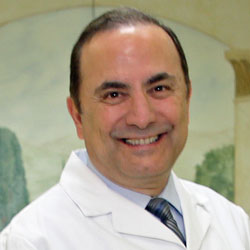 Tony Daher, DDS, MSEd The All-On-X prosthesis is a “popular” option for the treatment of completely edentulous arches with attractive esthetic and functional results. Attractive esthetic and functional results are the results of a well-fabricated presurgical “All-On-Non” Removable Complete Dentures. This concept uses X number of dental implants that are biomechanically positioned for maximum stability of the implant prosthesis. The All-On-X prosthesis concept continued, for many years now, to be a reliable and has a predictable high success rate. The final prosthesis can be made in various grades of laboratory materials from acrylic to metallo-ceramic to Zirconia, always with the same attention to esthetic and functional details. With the use of slides and videos, the presentation will cover many clinical tips needed for a predictable outcome using the All-On-X concept. Recorded - July 14, 2021
Tony Daher, DDS, MSEd The All-On-X prosthesis is a “popular” option for the treatment of completely edentulous arches with attractive esthetic and functional results. Attractive esthetic and functional results are the results of a well-fabricated presurgical “All-On-Non” Removable Complete Dentures. This concept uses X number of dental implants that are biomechanically positioned for maximum stability of the implant prosthesis. The All-On-X prosthesis concept continued, for many years now, to be a reliable and has a predictable high success rate. The final prosthesis can be made in various grades of laboratory materials from acrylic to metallo-ceramic to Zirconia, always with the same attention to esthetic and functional details. With the use of slides and videos, the presentation will cover many clinical tips needed for a predictable outcome using the All-On-X concept. Recorded - July 14, 2021 -
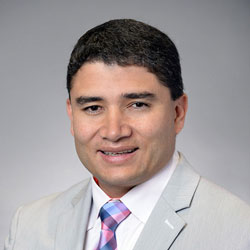 Emilio Arguello, DDS, MS This lecture will focus on the different models for successful management and integration of work-flows between a private practice versus a multi practice models. As well as the understanding of the common goals to maximize earning potential that can be achieved in both models from the practitioner’s point of view. Recorded - November 3, 2021
Emilio Arguello, DDS, MS This lecture will focus on the different models for successful management and integration of work-flows between a private practice versus a multi practice models. As well as the understanding of the common goals to maximize earning potential that can be achieved in both models from the practitioner’s point of view. Recorded - November 3, 2021 -
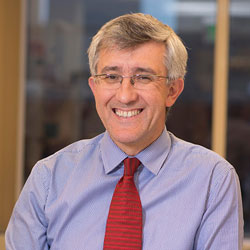 Alpdogan Kantarci, DDS, MS, PhD Peri-implant diseases present a major challenge in dental practice. Treatment options for advanced diseases around dental implants are limited. While there are several similarities between periodontal and peri-implant diseases in their pathogenesis and microbial etiologies, periodontal treatment strategies are not readily applicable to the treatment of peri-implant mucositis and peri-implantitis. One of the key differences is the characteristics of the implant surfaces. In this presentation, emerging preventive and therapeutic approaches will be discussed with an emphasis on geriatric patient population. Recorded - April 21, 2021
Alpdogan Kantarci, DDS, MS, PhD Peri-implant diseases present a major challenge in dental practice. Treatment options for advanced diseases around dental implants are limited. While there are several similarities between periodontal and peri-implant diseases in their pathogenesis and microbial etiologies, periodontal treatment strategies are not readily applicable to the treatment of peri-implant mucositis and peri-implantitis. One of the key differences is the characteristics of the implant surfaces. In this presentation, emerging preventive and therapeutic approaches will be discussed with an emphasis on geriatric patient population. Recorded - April 21, 2021 -
 Martina Stefanini, DDS, PhD The recession of the buccal soft tissue margin is a frequent complication of well integrated dental implants. The appearance of metallic structure or even their transparency through the thin buccal soft tissues are common reasons for patient aesthetic complains. Moreover, bad implant installation frequently results in excessive apical dislocation of the buccal soft tissue margin of the implant supported crown. Soft tissue plastic surgical procedures and bilaminar techniques in particular, can be successfully used in combination with a pre and postsurgical prostethic approaches to increase the volume of the interdental soft tissue, to treat buccal gingival recessions and soft tissue dehiscence around dental implants and to provide the new implant supported crown with an esthetic transmucosal emergency profile. Recorded - May 4, 2021
Martina Stefanini, DDS, PhD The recession of the buccal soft tissue margin is a frequent complication of well integrated dental implants. The appearance of metallic structure or even their transparency through the thin buccal soft tissues are common reasons for patient aesthetic complains. Moreover, bad implant installation frequently results in excessive apical dislocation of the buccal soft tissue margin of the implant supported crown. Soft tissue plastic surgical procedures and bilaminar techniques in particular, can be successfully used in combination with a pre and postsurgical prostethic approaches to increase the volume of the interdental soft tissue, to treat buccal gingival recessions and soft tissue dehiscence around dental implants and to provide the new implant supported crown with an esthetic transmucosal emergency profile. Recorded - May 4, 2021 -
 Setareh Lavasani, DDS, MS This presentation is an interactive and comprehensive update in 2D and 3D CBCT radiographic interpretation. It focuses on the importance of developing an analytical strategy to systematically review different types of dental images. The importance of “pattern recognition” to differentiate between different jaw pathologies; inflammatory, benign, malignant and fibrou-osseous lesions with clinical cases will be discussed. An overview of possible differential diagnosis for paranasal sinuses opacifications and head and neck soft tissue calcifications are reviewed. Recorded - August 19, 2021
Setareh Lavasani, DDS, MS This presentation is an interactive and comprehensive update in 2D and 3D CBCT radiographic interpretation. It focuses on the importance of developing an analytical strategy to systematically review different types of dental images. The importance of “pattern recognition” to differentiate between different jaw pathologies; inflammatory, benign, malignant and fibrou-osseous lesions with clinical cases will be discussed. An overview of possible differential diagnosis for paranasal sinuses opacifications and head and neck soft tissue calcifications are reviewed. Recorded - August 19, 2021 -
 Dan Holtzclaw, DDS, MS Although they have been in use for over 50 years, pterygoid dental implants are one of the least understood styles of dental implant treatment. This may be due to the fact that pterygoid implants are widely considered to be one of the most difficult fixtures to place in all of implant dentistry. In this webinar, Dr. Dan Holtzclaw details his experience utilizing pterygoid implant in hundreds of full arch immediate load cases. Recorded - September 1, 2021
Dan Holtzclaw, DDS, MS Although they have been in use for over 50 years, pterygoid dental implants are one of the least understood styles of dental implant treatment. This may be due to the fact that pterygoid implants are widely considered to be one of the most difficult fixtures to place in all of implant dentistry. In this webinar, Dr. Dan Holtzclaw details his experience utilizing pterygoid implant in hundreds of full arch immediate load cases. Recorded - September 1, 2021 -
 Despoina Bompolaki, DDS, MS Dental implants have become a widely accepted, sought-after treatment option for replacing missing teeth. Favorable treatment outcomes depend on proper planning and execution, from both a restorative and a surgical perspective. This lecture will go well beyond the basics of restoring dental implants: achieving predictable esthetic outcomes when restoring anterior implants; capturing accurate impressions in multiple implant cases; identifying proper componentry for existing implants; recognizing and addressing common prosthetic complications; and most of all, supporting clinical decisions with scientific evidence. Recorded - November 20, 2021
Despoina Bompolaki, DDS, MS Dental implants have become a widely accepted, sought-after treatment option for replacing missing teeth. Favorable treatment outcomes depend on proper planning and execution, from both a restorative and a surgical perspective. This lecture will go well beyond the basics of restoring dental implants: achieving predictable esthetic outcomes when restoring anterior implants; capturing accurate impressions in multiple implant cases; identifying proper componentry for existing implants; recognizing and addressing common prosthetic complications; and most of all, supporting clinical decisions with scientific evidence. Recorded - November 20, 2021

